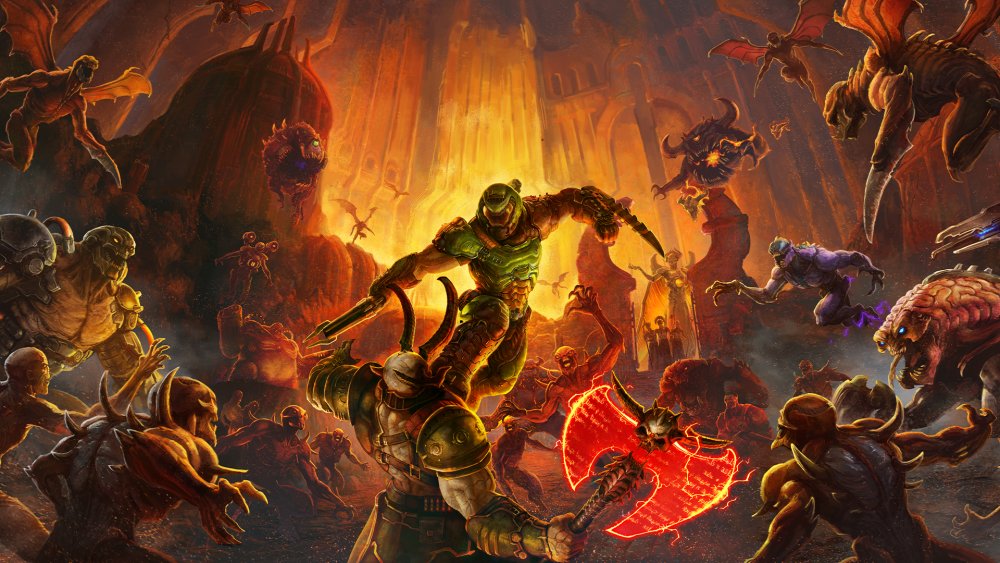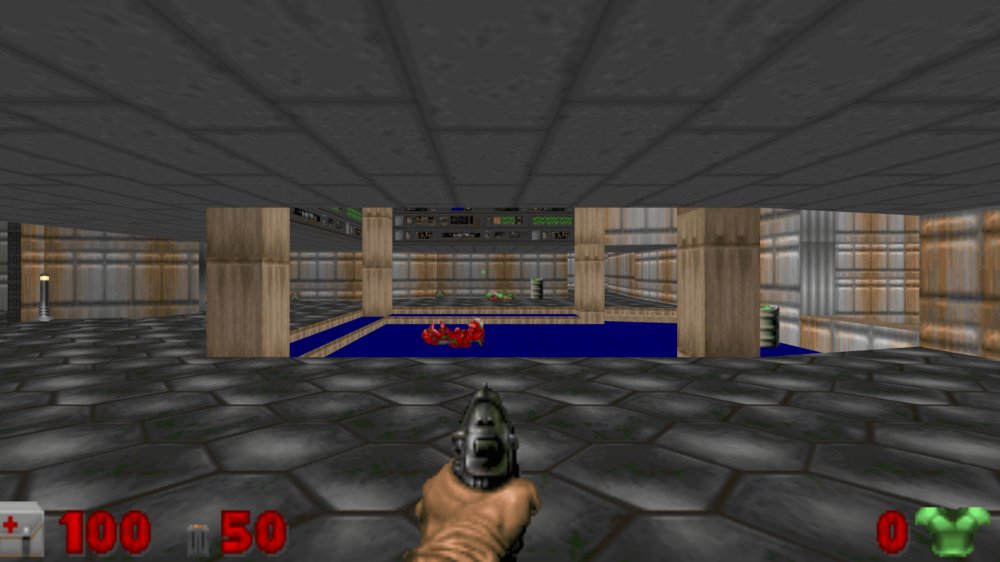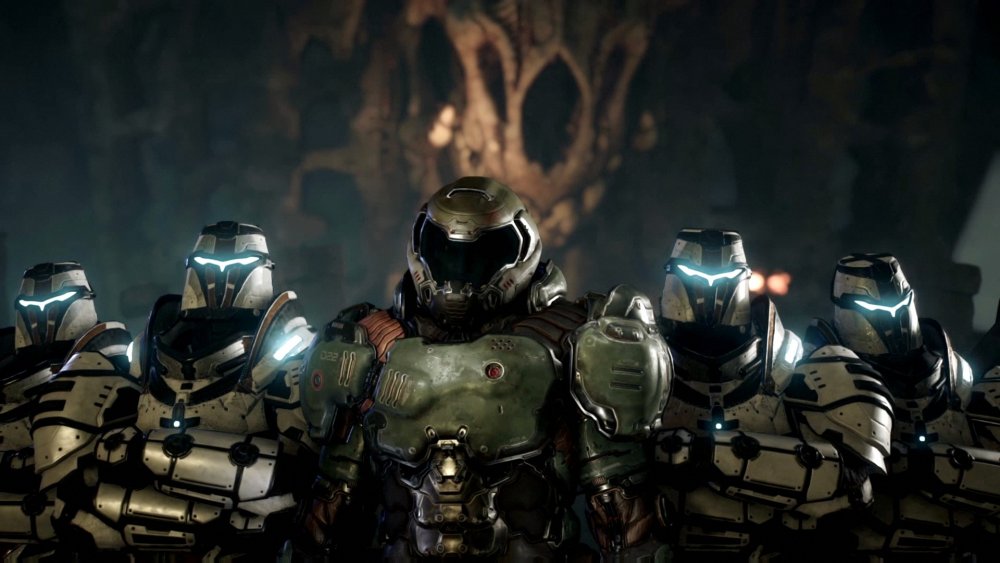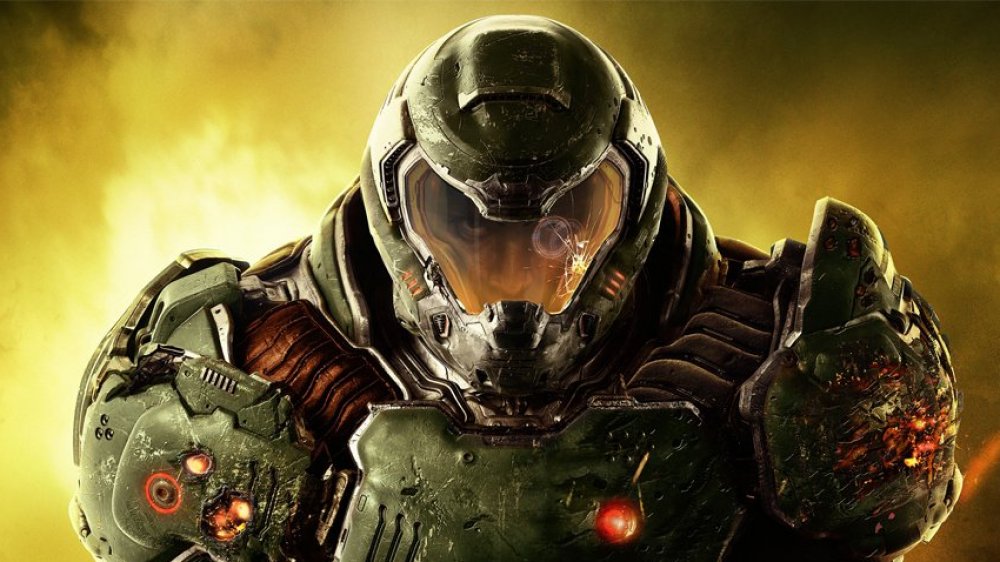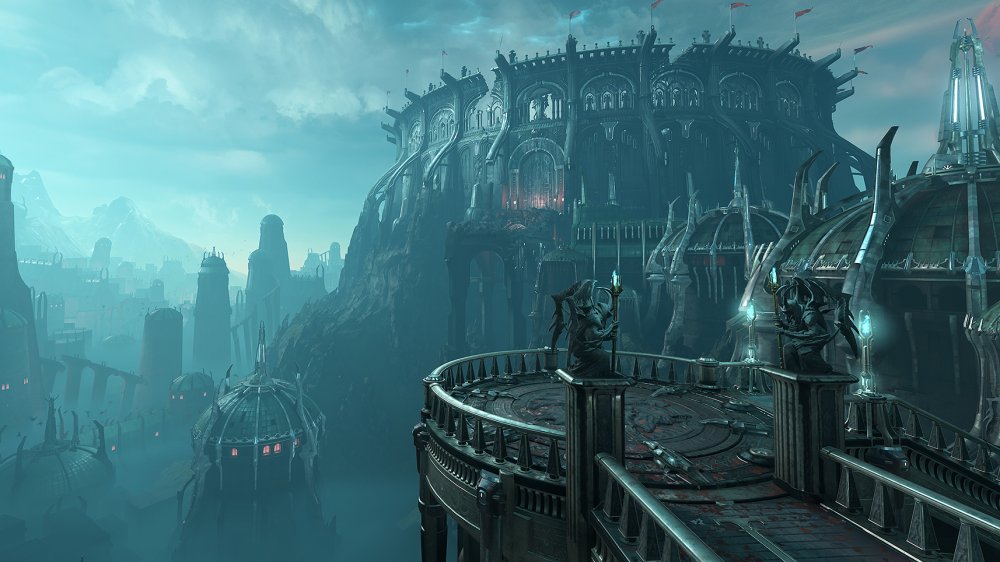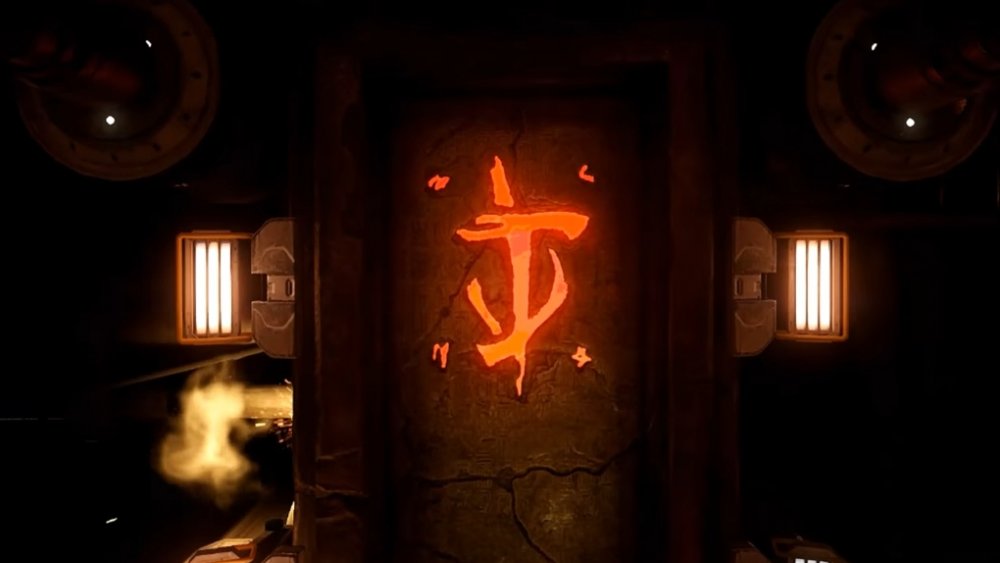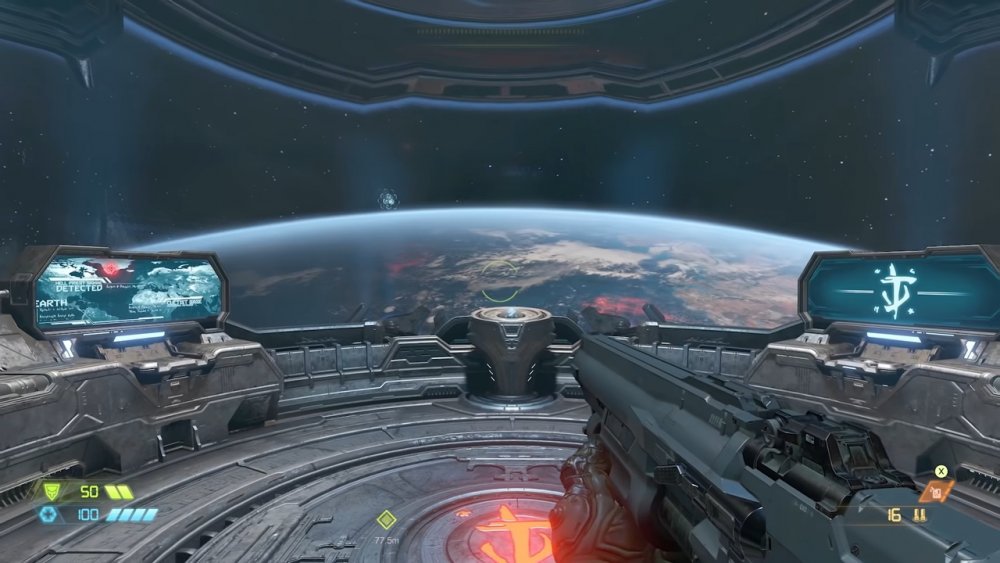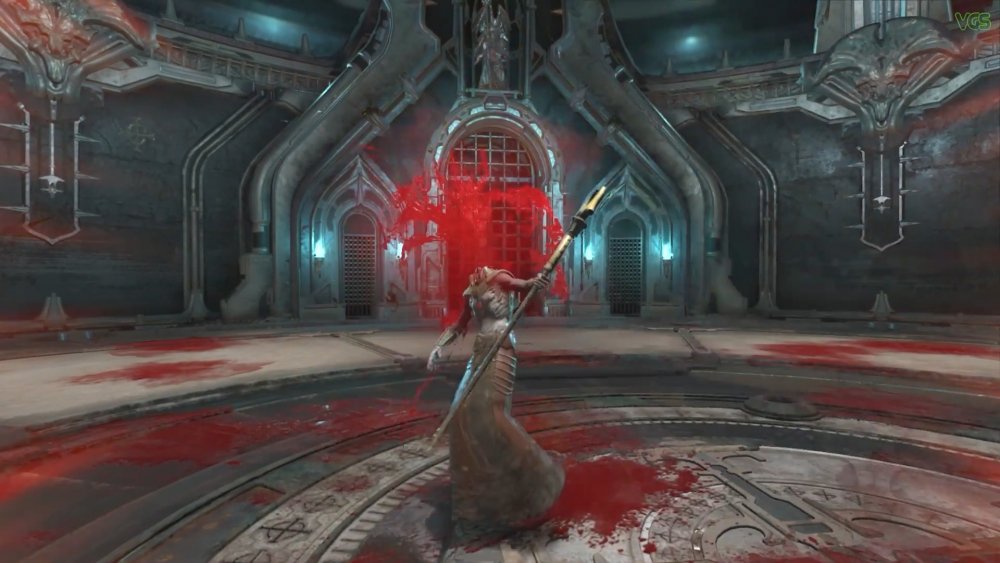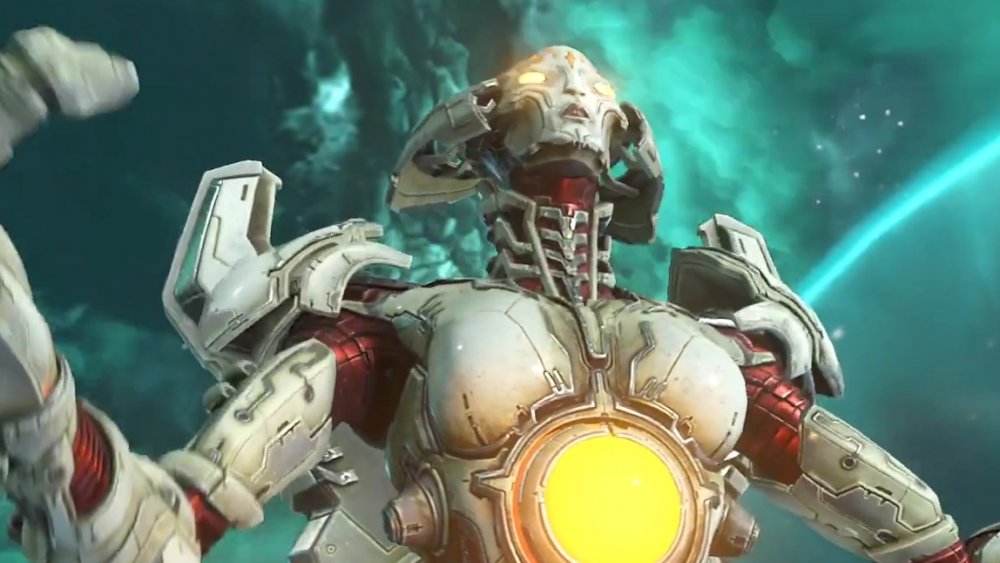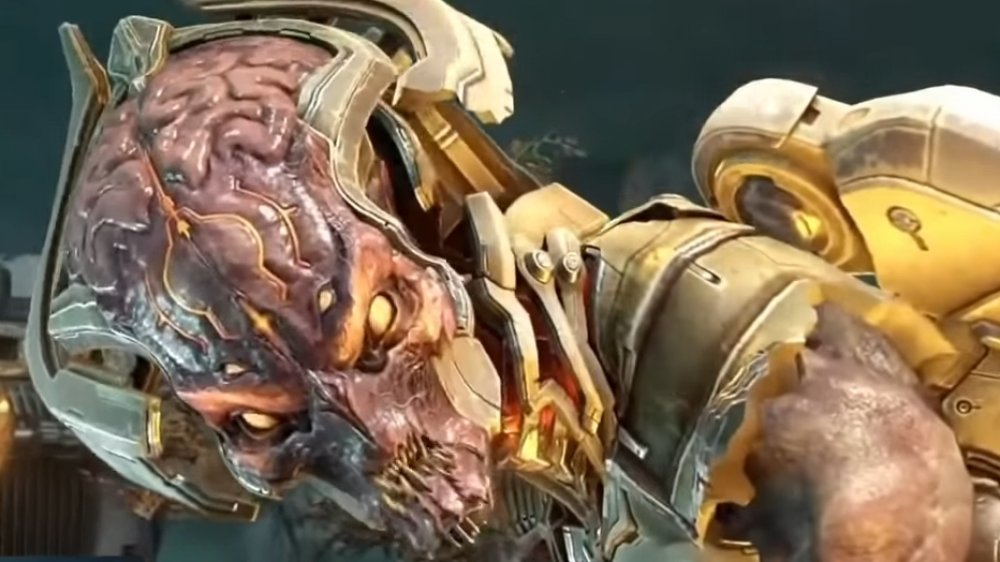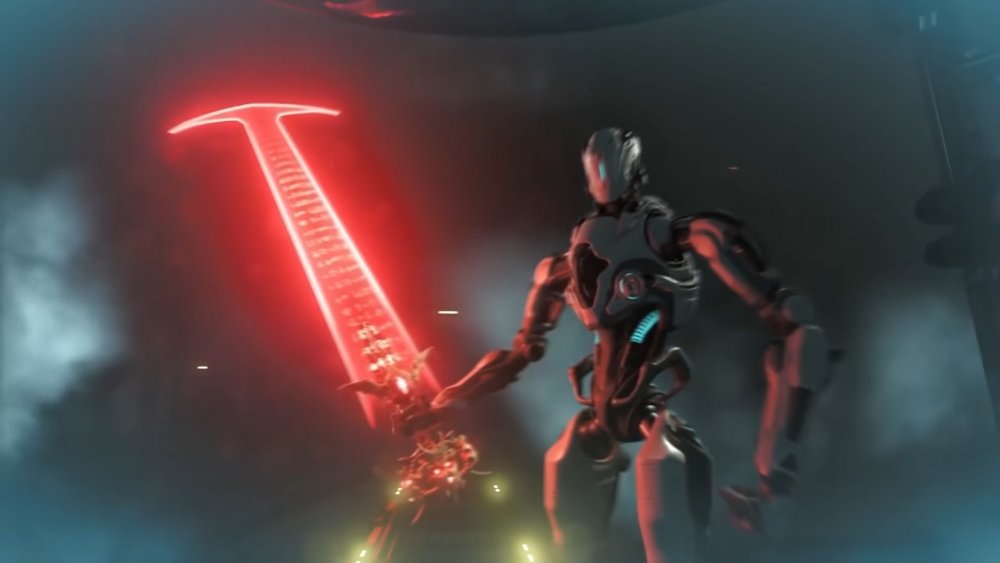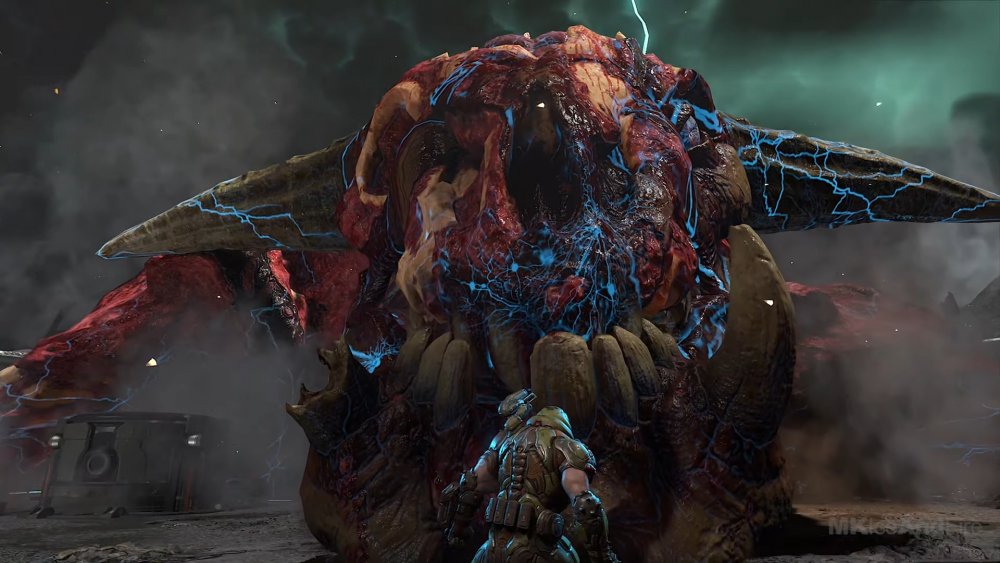The Ending Of Doom Eternal Explained
Doom Eternal is a wild ride from start to finish, full of both ripping and tearing. Whilst in the throes of epic powermurder, you might forget to follow the plot, read the codices, or do anything other than turn demons into a gooey red paste. For those who have fallen prey to this understandable oversight or who were left scratching their heads after finishing the game, here's a breakdown of Doom Eternal's ending and the events leading up to it.
The timeline of the Doom series is wacky, with plot holes big enough for the Icon of Sin to speed dash through. However, it's worth pointing out that the franchise's plot and world are the work of many individuals over the course of multiple decades. Some inconsistencies are to be expected in such a situation. To avoid getting too tangled up, this explanation will focus on Doom, Doom 2, Doom 2016, and Doom Eternal, which are culturally and canonically the most important Doom games.
A look back at the Doom franchise's twisted timeline
Doom stars Doomguy, an unnamed space marine stationed on Mars as punishment for assaulting a senior officer who ordered him to fire on civilians. The Mars colony is run by the Union Aerospace Corporation (UAC), which is messing around with teleportation gates at its facilities on Mars' moons, Phobos and Deimos.
Unsurprisingly, things go terribly wrong. Deimos disappears, portals to Hell open, and demons come flooding out. Doomguy is sent to Phobos, and his unit is butchered. He ventures out, kills his way across Phobos and Deimos, and eventually into the heart of Hell itself. In Doom 2, Earth is invaded by the forces of Hell, and Doomguy once again springs into action and fights his way across Earth and back into Hell, where he kills the Icon of Sin.
There are a few other Dooms, but these are the ones that matter the most. Doom 3 is a reboot of Doom, but the plot is very much the same — teleportation gates, bad science, Hell invasion, lather, rinse, and repeat. Doom 2016 (or Doom 4) is where things get a little funky, and as it turns out, it starts in media res. To fully grasp what's happening, you'll need to rewind a bit to the events between Doom 2 and Doom 2016.
Argent D'Nur, Night Sentinels, and Maykrs
According to information unveiled in Doom Eternal, the Doomguy (or Doom Slayer, as he's now known) is teleported across time and space and ends up on Argent D'Nur, home of the Argenta AKA the Sentinels, an interdimensional, intergalactic warrior society. Think medieval Klingons or space Vikings. They worshiped the Wraiths, their primordial gods. Their church was run by the Order Deag and the Night Sentinels were their protectors.
But how did the Sentinels become space Vikings worthy of a metal song? When they were a mere single-planet empire, they were visited by the Maykrs, a race of super-beings from the planet Urdak, led by the Khan Maykr. The Maykrs provided hypertechnology to the Sentinels, allowing them to travel across the galaxy and between dimensions, conquering as they went. Eventually, worship of the Wraiths was supplanted by worship of the Maykrs.
The Maykrs were spawned by a being they refer to as The Father. Every ten thousand years, his essence created a new Khan Makyr, the head of their race. But the Father's essence was stolen a while back by a rogue Maykr, ending the cycle.
Doomguy and the battle against Hell
The Doomguy shows up on Argent D'Nur, ranting and raving that Hell is on its way. Given that he's killed like twenty D&D campaigns worth of demons, he's kind of a big deal. He earns glory and renown through combat trials, and eventually joins the Night Sentinels. Samur, a rogue Maykr, even empowers him using Maykr tech. However, he did this without the Khan Maykr's permission, and was banished. However, the empowered Doomguy wins ever more impressive victories, and becomes a Doom Slayer.
Just in time, too, because Hell was in fact same-day shipping itself to Argent D'Nur. The Night Sentinels fight valiantly against the forces of Hell for a while, because they're Space Vikings. Meanwhile, the Makyrs and the Order of Deag discover that you can process slain demons into Argent energy to power machines and weapons and even grant eternal life. The Night Sentinels reject this new resource, though much of Argent D'Nur embraces it.
Civil war and betrayal
During their crusades into Hell, the Night Sentinels find out that the Maykrs had allied with the demons and enslaved many innocent Argenta souls. They aren't down with this, and try to awaken the Argent D'Nur masses to the true threat they're facing. Much of the heavily indoctrinated society ignores the Sentinels' warning.
This leads to a civil war, with the Night Sentinels and Doom Slayer on the losing side. They are betrayed and stranded in hell by one of their own, a man named Valen. Hell tormented Valen with visions of his dead son,stranded and tortured for all of eternity, until he turned on his compatriots in exchange for his son's resurrection. In what can only be described as instant karma, Hell corrupts his son and resurrects him as the Icon of Sin, a giant cybernetic goat-headed demon.
A slumbering Doom Slayer and Quake Champions
The Doom Slayer continues his rampage across Hell until Hell Priests trap him in a collapsing temple and enclose him in a sarcophagus. He sleeps there for an undetermined amount of time, though codices in Doom 2016 imply that he's napping for thousands of years.
Here's where the timeline gets a pretty hardcore retcon (though there are some decent fan theories that suggest the original Doom universe is an alternate dimension or timeline than the Doom 2016 universe). When Doom 2016 starts, Earth is basically okay except for a pretty serious energy crisis. Mars has colonies again, and the UAC is running them. They have discovered Argent energy via portals to Hell (though they aren't telling anyone that last part because, presumably, humans in this game universe have read Faust or seen The Devil's Advocate).
In an attempt to better understand and harness Argent energy, the UAC is sending expeditions into Hell. One of them finds the Doom Slayer and brings him back. He wakes up after everything has gone to Hell (literally) and kills his way to victory on Mars, yet again. Eventually he defeats head Hell cultist and UAC scientist Olivia Pierce. But at the end of the game, Samuel Hayden, head UAC scientist and cyborg, betrays the Doom Slayer and chucks him into an alternate dimension that turns out to be Quake Champions. Yes, you read that right.
Fortress of Doom and return to Earth
In Doom Eternal, the Doom Slayer shows up in the Fortress of Doom, a space station that is part Sentinel and part Maykr technology. It has the power to create portals to darn near anywhere, and the Doom Slayer uses this to continue his anti-Hell crusade. He kills Deag Nilox, one of three Hell Priests, pretty much immediately.
Despite his best efforts in Doom 2016, Hell has invaded Earth and just absolutely wrecked things. To stop the consumption of Earth, the Doom Slayer has to kill the three Hell Priests. They all worship the Khan Maykr, who is firmly in bed with Hell. He visits Valen, living in exile in Hell, to obtain a battery for the Celestial Locator. Valen also gives the Doom Slayer a dagger that will let him destroy his son's heart and hopefully free his soul from the Icon of Sin.
The Slayer uses the Celestial Locator to find Deag Ranak, who is hiding in the Arctic. It's worth noting that the Slayer picks up his Super Shotgun here, which, according to the codices, functions like its predecessor in Doom 2016. Of course, this one has been upgraded with a meat hook, so it's strictly more awesome.
Samuel Hayden and the final Hell Priest
The Khan Maykr knows that it's two down, one to go, and so she transports Deag Grav to a secure location. Vega, the Fortress of Doom's AI, suggests Samuel Hayden might know the location of Deag Grav so the Doom Slayer picks him up from the ARC Complex, a human installation.
Hayden is a cyborg who was severely damaged in Operation Hellbreaker, an epic military pooch screw undertaken against the Super Gore Nest, a massive interdimensional beach head for Hell's forces. Human scientists have been trying to figure out how to interface with his cybernetic mind but his brain has an "alien makeup". However, when the Doom Slayer brings him back to the Fortress, he instantly interfaces and takes control of it.
In Doom 2016, players are told that Samuel Hayden is a rich scientist from a powerful family who was diagnosed with terminal brain cancer. To escape his fate, he transferred his consciousness and parts of his brain into a mechanical body, powered by Argent energy that he designed himself. But the technology is alien. Humans can't really interface with it using their own computer systems.
Khan Maykr's dark bargain
The Khan Maykr's deal with Hell finally comes out — Hell is using human souls to create Argent energy, and their soulless bodies degrade into the very demons you've been fighting. She consumed and destroyed the Sentinels, and has moved on to other worlds, all to power her home dimension, Urdak.
Interestingly, Samuel Hayden is the one who explains the process of creating Argent energy, as well as the fate of the humans who undergo it. He even goes so far as to say that things would be better under "different management", implying that he would do a better job than the Khan. Though it's hard to imagine how he could do worse than "make deal with Hell, consume Earth, enrage Doom Slayer, ensure own powermurder".
The Doom Slayer uses the Doom Fortress to travel to Urdak, interrupts the Khan Maykr's procession ritual, and jams the dagger into into the heart of Valen's son, preventing her from controlling the Icon of Sin. Now out of control, the Icon teleports to Earth. Also, the deal between the Maykrs and Hell has been broken, and the demons waste no time invading Urdak. Deals with Hell. They never work out.
Defeating Khan Maykr and the Icon of Sin
The Khan and the Doom Slayer finally face off, because apparently she hadn't noticed his galactic murder high score. Needless to say, it doesn't go well for her. It's interesting to note that the Maykrs mimic an angelic look via their armor, but once the armor is taken away, they look positively demonic. Does the Khan Maykr look that way because her extended dealings with Hell have corrupted her, or did she always look like the Predator after a facelift gone wrong? The game never answers this question.
The Icon of Sin, freed from the Khan Maykr's control, needs to be stopped. It's a Titan, a special variety of Hell beast, and thus can only be killed using a Crucible. The Doom Slayer blows the armor plates off of it, blows open its skull, and jams the Crucible into its brain. Titans only stay dead if the Crucible stays inside of them, so the Doom Slayer snaps the handle off to prevent anyone from removing it. Given that he's killed this thing once before, he probably wants it to stick this time.
Then the Doom Slayer walks away as the screen zooms out and fades to black, because that's what larger than life protagonists do at the end of FPS games.
The untold truth of Samuel Hayden
Samuel Hayden always seems like he knows more then he's letting on. He built his own robot body which interfaces perfectly with Maykr / Sentinel tech. He knows more about both societies than a human born in his era has any right to know. And he's clearly a shifty dude based on the way he tossed the Doom Slayer into Quake Champions at the end of Doom 2016.
A fan theory has emerged that he is actually Samur Maykr, the rebel Maykr who empowered the Doom Slayer with great power, transforming him from a human space marine into someone who can rip and tear demons with his bare hands.
If he's a Maykr, perhaps he empowered the Doom Slayer because he knew that he would eventually kill the Khan Maykr, leaving a power void that he could fill. The History of the Sentinels codices indicate that the Doom Slayer had no political ambitions. So, he wouldn't be a competitor for control of the Maykr empire or Hell itself. Perhaps the Doom Slayer has been a catspaw for the last two games, ripping, tearing, and paving the way for Samur Maykr's rise to power.
What's next for the Doom Slayer?
The Doom Slayer won't appreciate being used, but he doesn't seem to have a dog in the race in terms of the state of the universe (multi-verse?) of Doom. He doesn't seem to care who is in charge of what. That said, both Doom 2016 and Doom Eternal hammered home that he despises demons. If Samuel Hayden tries to take control of Hell and turn it towards his own purposes, then the Doom Slayer will surely get involved.
You'd think that Hayden would be smart enough to look at how things went for the Khan and Valen, and think "Hey, maybe not." But he's arrogant, and thought that he could control Argent energy in Doom 2016. If he is Samur Maykr, then he knows just how evil Hell can be, and just how powerful it is. He lost his mind when the Doom Slayer chose to destroy the infrastructure for harvesting Argent energy rather than preserve it.
Samuel might be short on sense, but not self-confidence. The Doom Slayer seems happy to use Hayden for his knowledge but likely will not tolerate his ambitions if it benefits Hell. Maybe the next Doom will feature Samuel Hayden as the primary antagonist.

